There’s no question that the Galaxy S24 series and its Galaxy AI tricks are getting the most attention right now. But it’s not just Samsung launching new flagship phones in early 2024. Oppo’s OnePlus is also prepping an extremely intriguing new Android flagship. The OnePlus 12 will feature similar hardware to the Galaxy S24 series. The handset lacks its Samsung counterpart’s AI bells and whistles, but it comes with a feature that even the Galaxy S24 might lack: An innovative cooling system.
In fact, after seeing a OnePlus 12 teardown, I can only hope that Apple, Samsung, and others start implementing similar solutions to cool down the increasingly more sophisticated components of modern smartphones.
The iPhone 15 Pro is a notable example of overheating issues, which Apple fixed via software updates. But I can’t help but wonder if a better internal cooling system might have prevented those overheating issues to begin with. The A17 Pro chip is so powerful that it can offer console-grade gaming. But it also generates plenty of heat.
Its direct rival is the Snapdragon 8 Gen 3, a custom version of it running on the Galaxy S24, S24 Plus, and S24 Ultra. On its part, Samsung touted the improved cooling system of the Galaxy S24 series. We’ll soon learn how well that cooling system works.
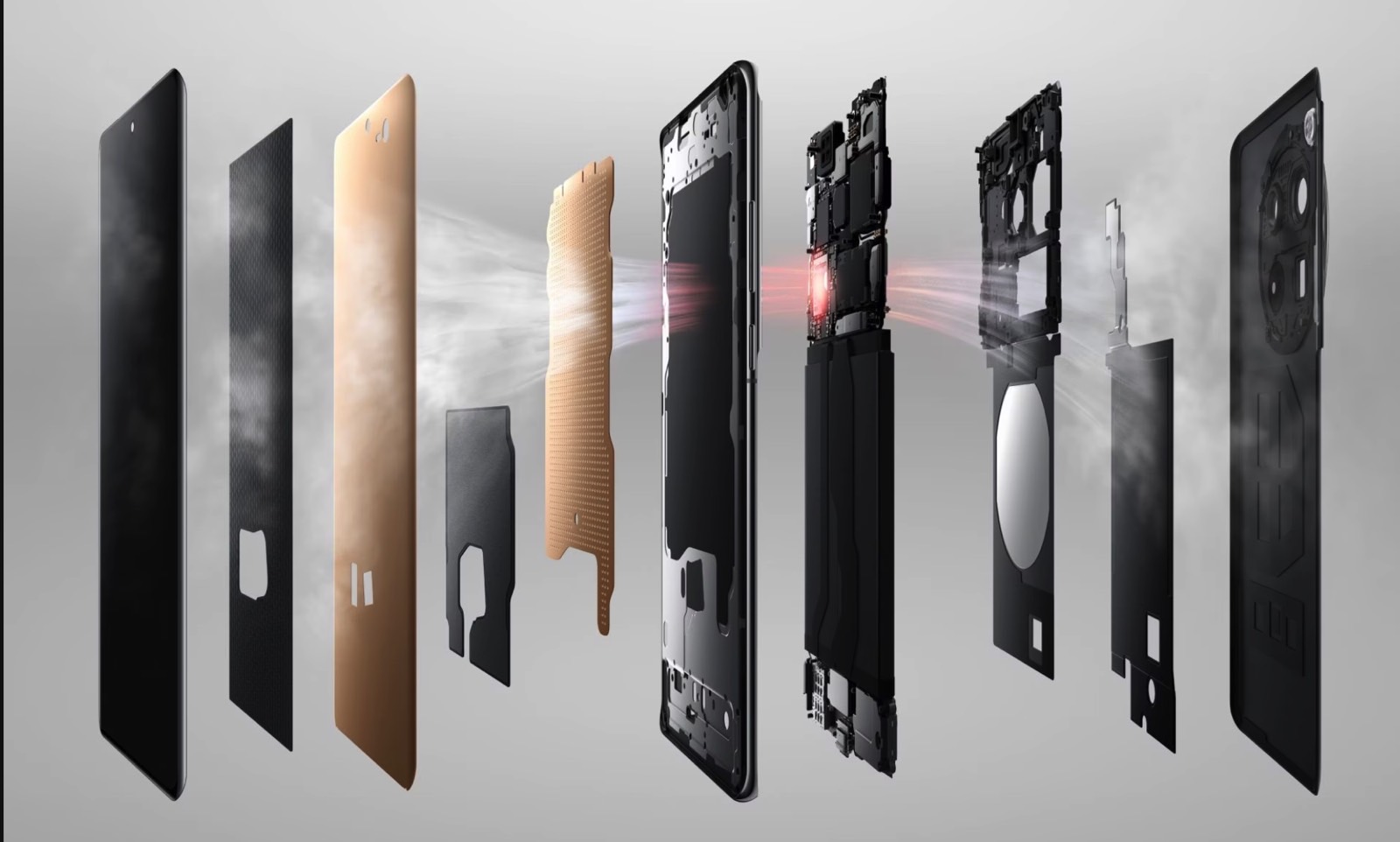
How OnePlus describes its cooling system
This brings me to the OnePlus 12 and its Dual Cryo-velocity VC Cooling System. Yeah, it’s a mouthful, but what matters is its functionality.
VC, by the way, stands for vapor chamber. That’s a sealed component inside a smartphone that contains a liquid to promote the exchange of heat. The liquid turns to gas when it heats up, moves inside the chamber, and recondenses when it cools down.
The “dual cryo-velocity” part might refer to the two VCs inside the device. The teardown part will further explain that feature.

That marketing name might make the whole contraption sound like a gimmick. OnePlus said in a press release the OnePlus 12 and 12R feature a VC surface of 9,140 square mm, the largest in OnePlus history. The second VC measures 3,686 square mm and is placed atop the key components that generate heat. That’s the Snapdragon 8 Gen chip, of course.
The company also said the smaller VC absorbs heat more uniformly from these key components. Then, the larger VC accelerates the condensation of hot vapor into liquid. All of that should improve heat dissipation. The larger vapor chamber should cool the smaller one.
Furthermore, OnePlus says the VC structure has been improved. It features a structure inspired by “sophisticated aeronautical engines,” including a Laval nozzle design. This is a component you’d find on rocket engines and supersonic jets. Inside the OnePlus 12, it should reduce resistance and improve vapor flow.
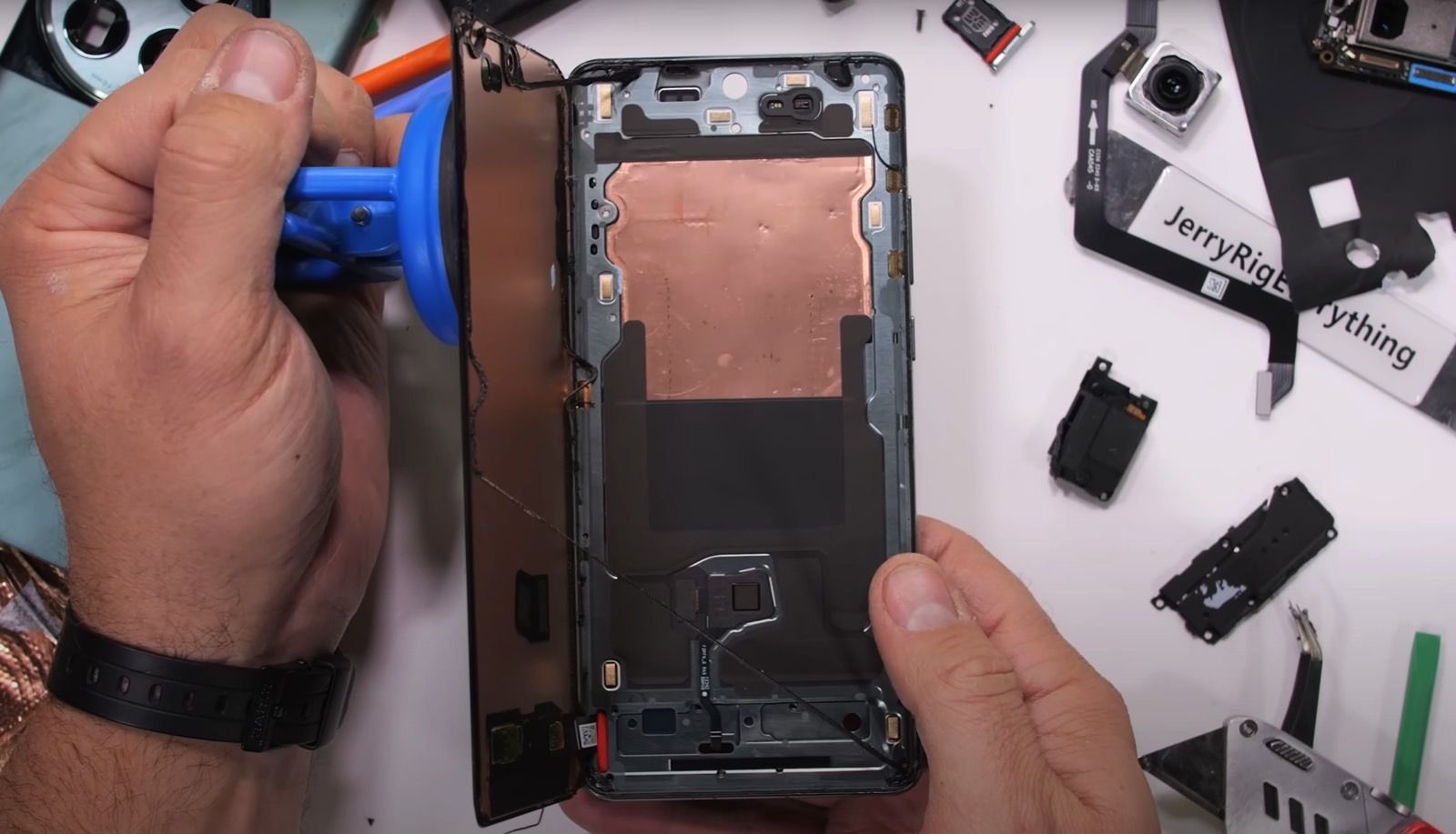
Finally, OnePlus mentions a “Fire Wall” design for the vapor chamber. This separates the mid-frame from the heat source. The point of this design choice is to prevent the user from sensing the higher temperature when holding the device.
All of that sounds great, at least in theory. You have to take OnePlus’s word for it without actually visualizing what this Dual Cryo-velocity VC Cooling System looks like. Also, nobody will blame you if you think the feature is more of a marketing tool for selling the phone.
That said, the visualization above comes from the OnePlus 12 product page, so you’d have an idea of what the new cooling system looks like.
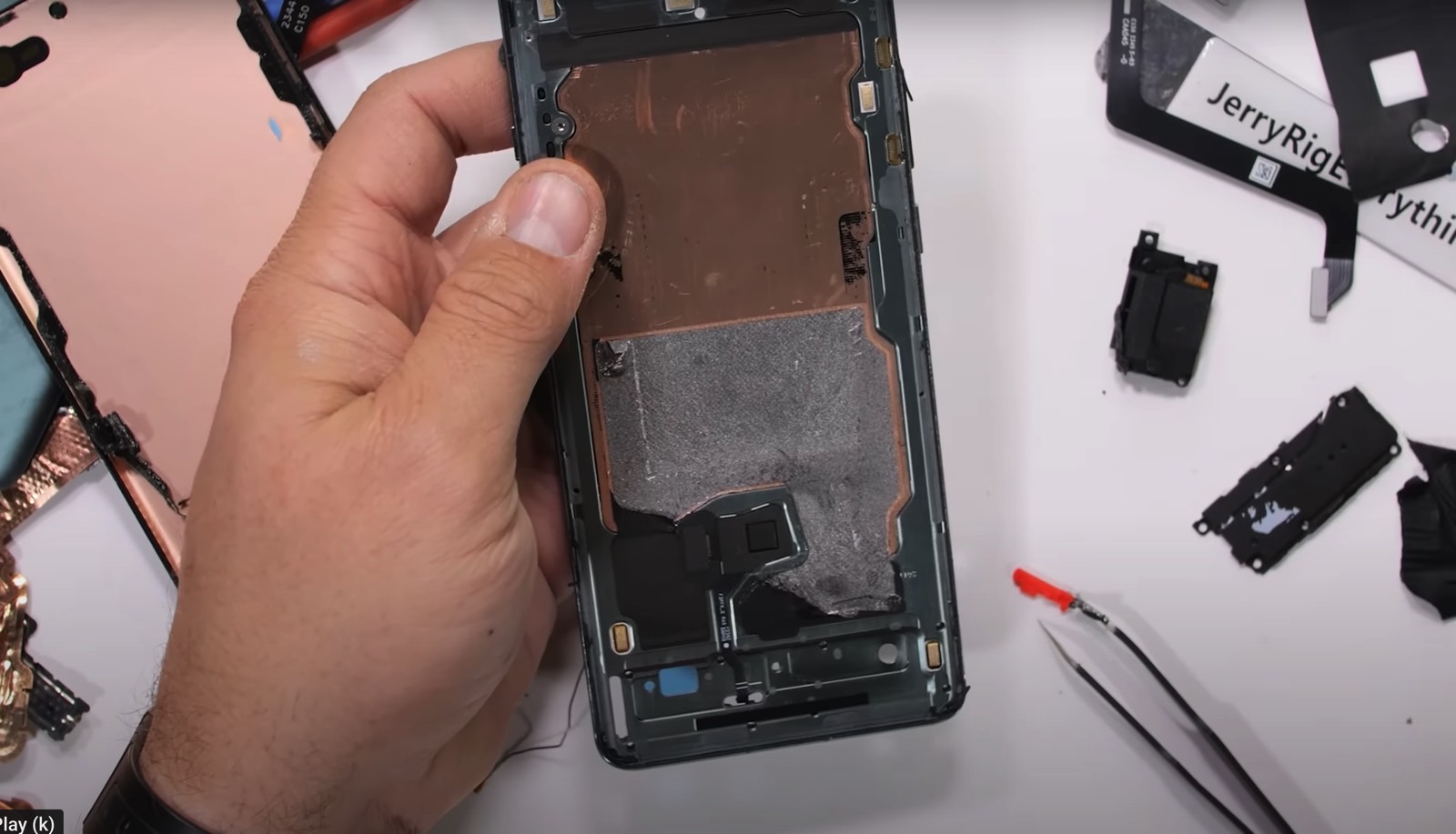
The teardown
This is where YouTuber JerryRigEverything’s teardown comes in. He received a OnePlus 12 with the purpose of tearing it down to reach the new vapor chamber and dismantle it. That’s what he did.
Watching the clip, you’ll soon see what OnePlus meant by its Dual Cryo-velocity VC Cooling System. It’s a massive cooling system that doesn’t face the rear of the handset. That’s where the wireless charging coil sits. By the way, the OnePlus 12 supports 50W wireless charging that needs just 23 minutes to recharge 50% of that 5,400 mAh battery. Comparatively, the Galaxy S24 Ultra wired charging maxes out at 45W.
Back to the OnePlus 12 teardown, the clip shows the handset features a dual-battery design, which explains the fast charging speeds.
So where’s the dual-VC cooling system then? Well, you’d have to remove the OnePlus 12 display to find it. That’s right, the Dual Cryo-velocity VC Cooling System pushes heat towards the screen. Is that a good idea for the health of the display? That’s where the VC sits on other phones for the same considerations. Also, a layer of graphite covers the bottom half of the OnePlus 12’s VC.
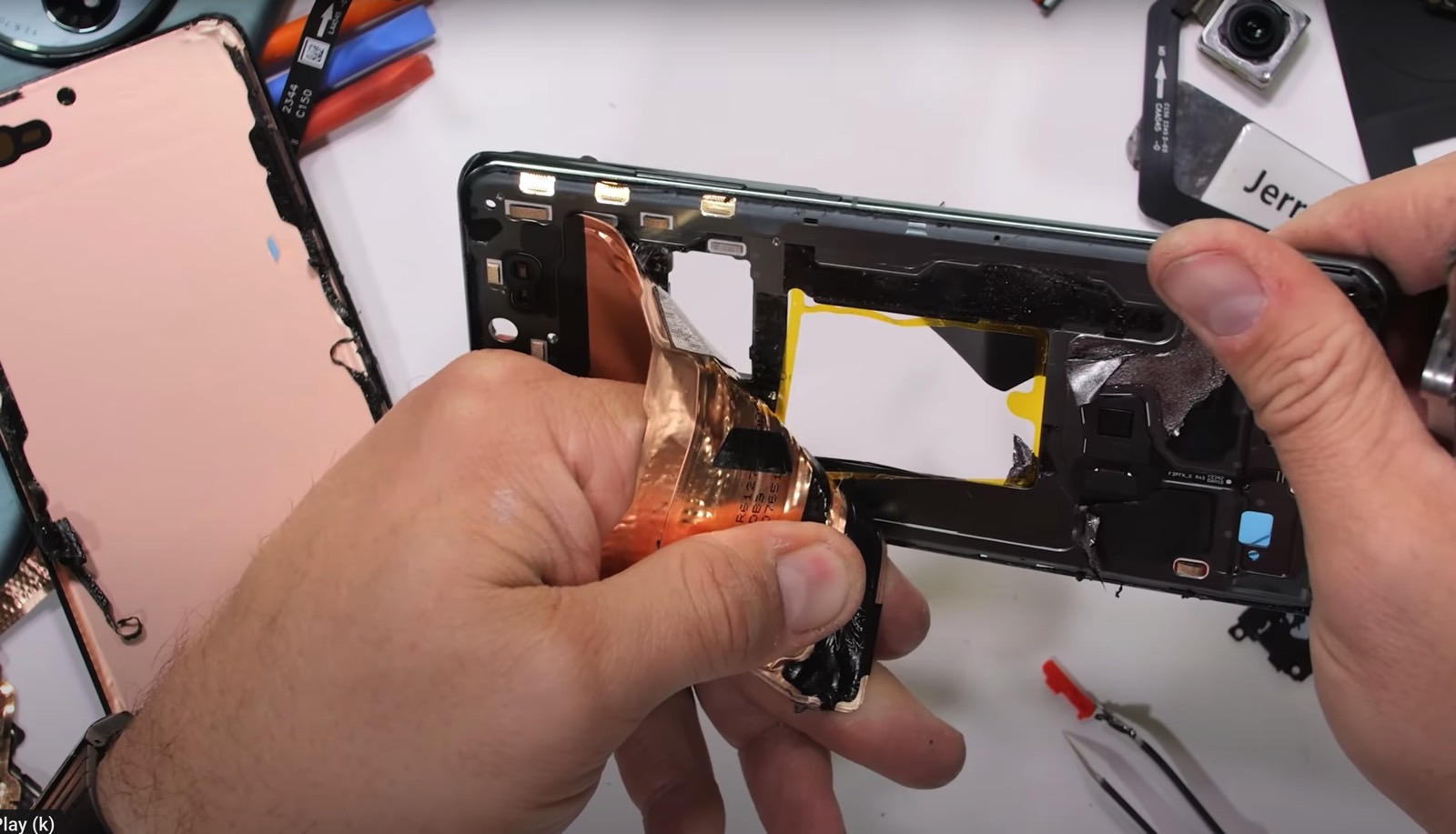
The Dual Cryo-velocity VC Cooling System does look formidable, however. It’s certainly massive and a lot larger than I’d have expected. The larger VC sits towards the screen, while the chip-centric one is placed behind it.
I’ll also point out that such a massive cooling system should help with battery charging-related heat dissipation.
Will the iPhone 16 feature better cooling?
I’ll upgrade my iPhone 14 Pro to an iPhone 16 model, and cooling will be a worry. Apple is already testing iPhone 16 prototypes, and I hope they’re also working on better ways to remove heat.
Will Apple copy the VC designs that exist on the market, OnePlus 12 included? That remains to be seen. But I certainly hope that cooling the iPhone 16 is a top priority. The handsets should feature even better chips, especially the iPhone 16 Pros. They might generate more heat, too.
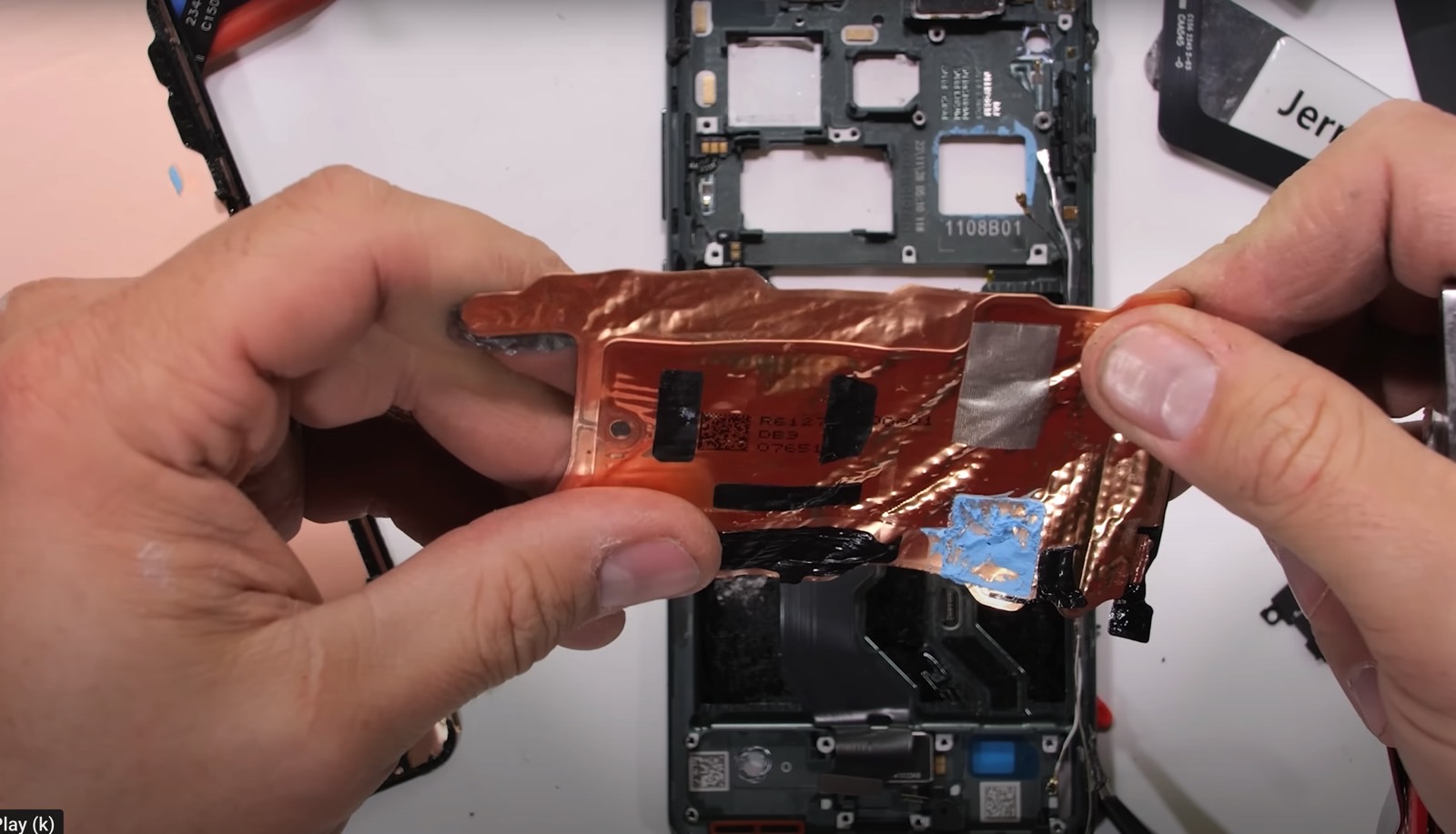
Back to the OnePlus 12’s Dual Cryo-velocity VC Cooling System, there’s one more thing that needs to be tested. Now that we know how massive the cooling system is, we must see how it works in real life.
JerryRigEverything reassembled the handset, and it would have been interesting to see how it fared without the cooling system in place, which he destroyed. Unfortunately, the display died during the teardown. You can watch the full clip below.
Other OnePlus 12 tests in the wild, including comparisons to the Galaxy S24 series, might tell us which device cools the Snapdragon 8 Gen 3 better. That will be the real test for the OnePlus dual-VC cooling system.








